Paste Paper Demo
Kathleen O’Connell
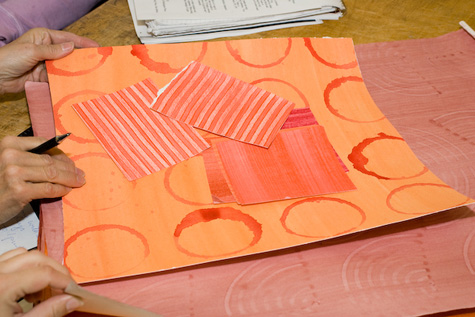
Kathleen O’Connell gave a demonstration on how to make paste paper. Below are a few samples from the quick demonstration. Paste paper is an inexpensive and versatile way to decorate paper for book covers and book arts.
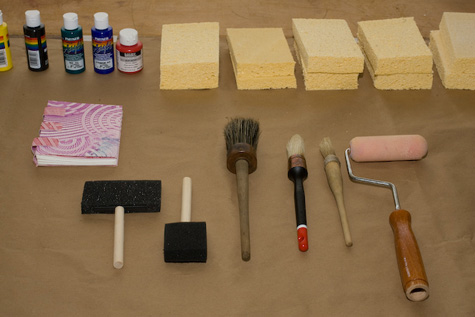
These are some of the tools that she brought for the demonstration. Once you start, you can experiment with a variety of items.

Methyl cellulose is mixed with water to make the paste. Any kind is fine to use.
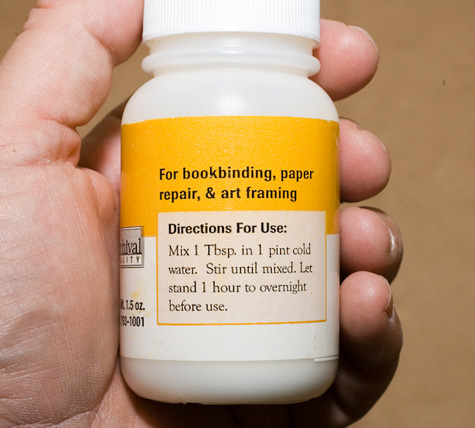
Simply follow the instructions on the container. You can add more or less powder if you prefer a thicker or thinner consistency.

These are other tools used to for drawing or pattern stamping on to the wet paste.
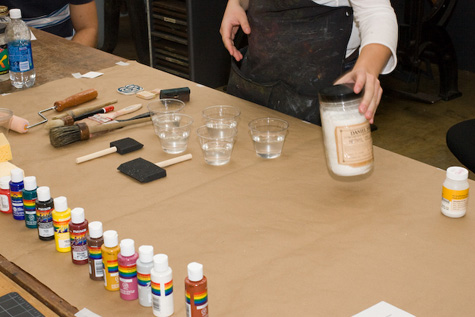
Several cups or containers are filled with water. Methyl cellulose is added to them to make the paste. If you mix several at the beginning, you will be able to mix several colors and work with a greater variety of colors.
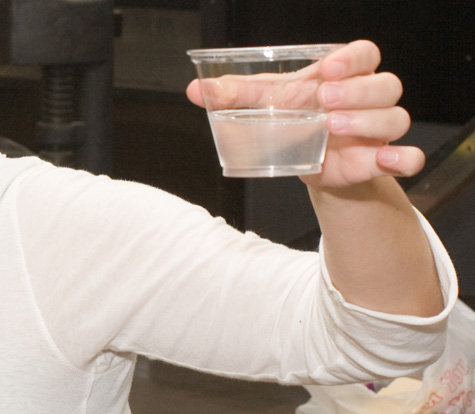
This is what the paste looks like after it has been mixed. It is cloudy and runny but not too thick.

This is one brand that you can use. You can try other water soluble paints.
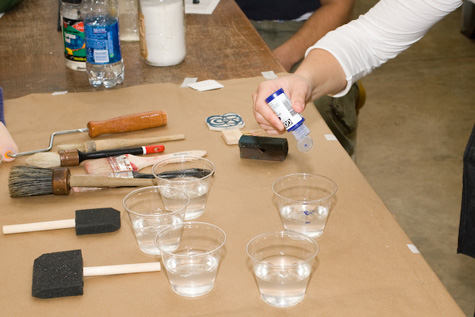
Apply a few drops of water soluble paint or pigment in to the paste and stir or mix it well. Add paint until you reach the color and saturation that you desire.
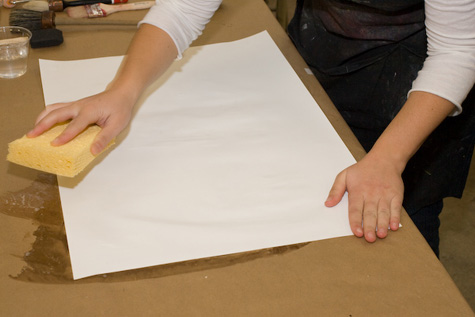
Start by wiping a clean damp sponge on to the surface of the paper. You only need to dampen the paper slightly.
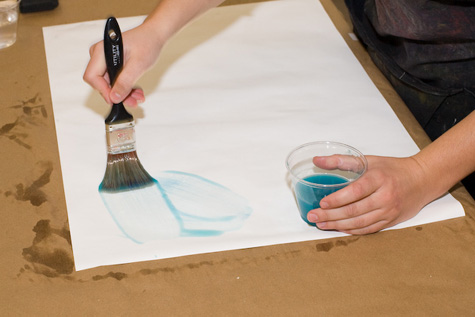
Once the paste is made and color has been added, apply paste to the paper with a brush.
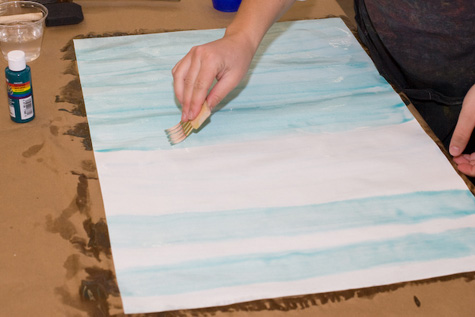
Paste can be applied with different brushes.
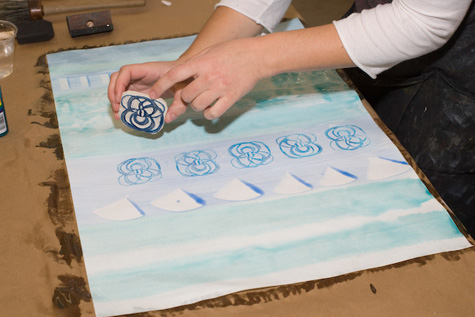
A stamp is used to apply a pattern on top of the paper and on top of applied paste. This stamp was hand cut from a rubber stamp material.
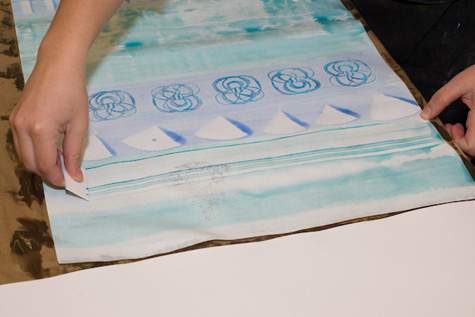
Scraps of mat board can be cut into shapes and dragged on top of wet paste to make patterns.
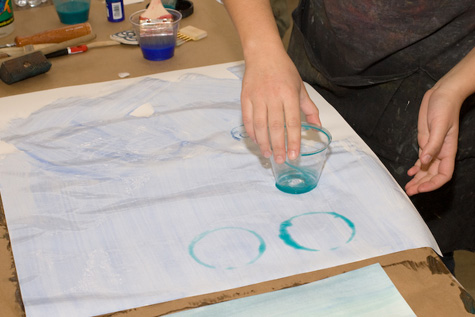
Kathleen illustrated the versatility of the process by picking up a cup and uses it to apply patterns by dipping the bottom of the glass and using it as a stamp on the paper.
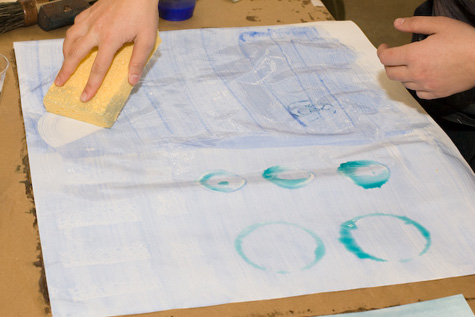
A damp sponge can be used to apply color or can be used to remove paste before it has dried.
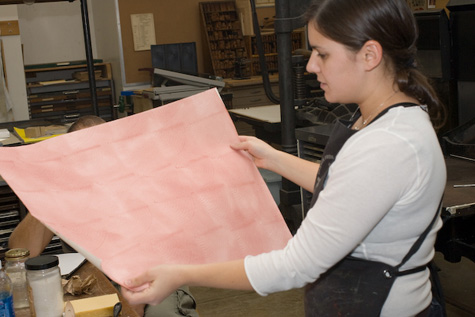
Paper can be allowed to dry and repositioned on the table for more painting.

The sheet can be damped again. The color of the dry sheet will not run.
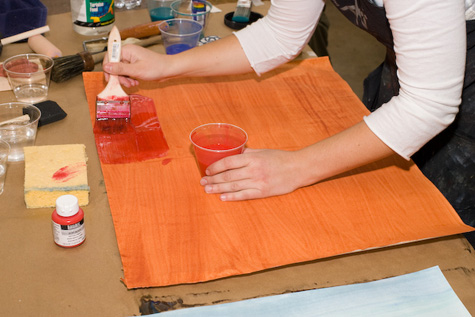
Once damp, a new color can be applied over the first coat of color.
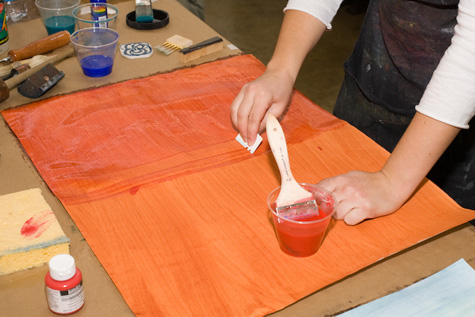
Once the paste is on the sheet, the wet paste can be altered with mat board or other tools.
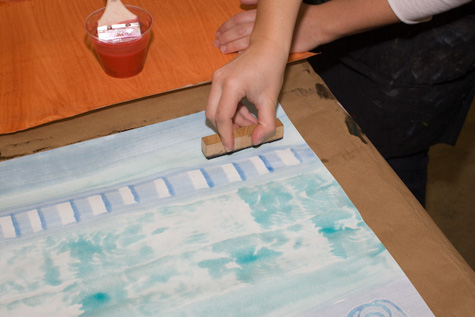
In this photograph, Kathleen is using a large piece of wood type to make a pattern on the wet paste.
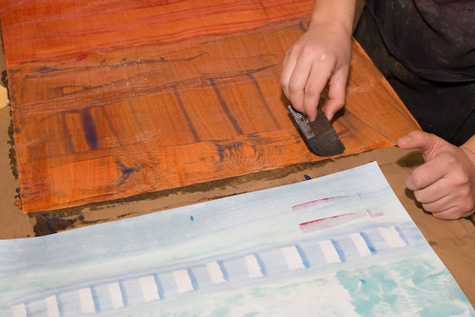
A textured piece of wood is dragged over wet paste to create more pattern.
Cool!!
I have some Methyl cellulose from my failed atempts to marble paper… perhaps I have more luck making paste paper!!!
Thank you!